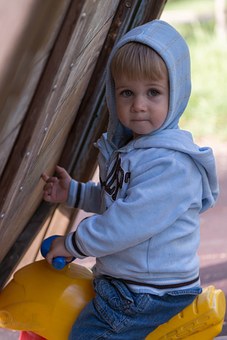Mouth breathing effects in toddlers, infants, babies and children and its correction

Mouth breathing effects in toddlers, infants, babies and children and its correction
This article discusses the most essential discoveries in this area and answers such questions as,"Should I worry about my 4 year old breathing through his mouth?"
"Are these any special methods for infants mouth breathing?"
"What are the techniques to deal with oral breathing when sleeping in toddlers?"

"How to get a child to breathe through their nose?"
"What are the causes for breathing through their mouth?"
"How to fix mouth breathing at nights in children?"
"How can I deal with an infant noisy breathing?"
Mouth breathing in babies, children, toddlers and infants is an emerging problem facing parents and the medical community due to its devastating effects on the development of the young. In order to realize the broad scope of negative effects of mouth breathing, consider the titles of recent research articles:
Radiological evaluation of facial types in mouth breathing children: a retrospective study (Costa et al, 2008)
Prevalence of malocclusion among mouth breathing children: do expectations meet reality? (Souki et al, 2009)
Prevalence of oral malodor and the relationship with habitual mouth breathing in children (Kanehira et al, 2004)
Etiology, clinical manifestations and concurrent findings in mouth-breathing children (Abreu et al, 2008)
A comparative study of effects of mouth breathing and normal breathing on gingival health in children (Gulati, 1998)
Relationship between mouth breathing and postural alterations of children: a descriptive analysis (Krakauer et al, 2000)
The negative effect of mouth breathing on the body and development of the child (Flutter, 2006)
Revealed effects of mouth breathing in children, babies, toddlers and infants are:
- Malocclusion
- Enlarged adenoids
- Higher levels of Gingival index
- Enlarged tonsils
- Allergic rhinitis
- Obstructive deviation of the nasal septum
- Facial changes (long face, half-open mouth and increased anterior facial height)
- Postural alterations
- Oral malodor.
(Abstracts related to these medical research findings are on my website.)
Typical clinical manifestations of mouth breathing in the young include:
- Sleeping with mouth open
- Nasal obstruction
- Snoring
- Nocturnal sleep problems or agitated sleep
- Itchy nose
- Drooling on the pillow
- Irritability during the day
Major causes of mouth breathing and poor health in children are:
- Over-heating (too much clothing)
- Over-feeding of children by parents
- Lack of physical activity (or exercise with mouth open)
- Mouth breathing parents
- Sleeping on their back (except infants, who should sleep on their back while tightly swaddled)
- Junk food and deficincy of essential nutrients in diet (Mg, fish oil, Ca, and Zn)
In comparison with normal breathing in adults (8-12 breaths/min), normal breathing in the young is more frequent (newborns: 40-46 breath/min; infants: 2040 breaths/min; preschool children: 2030 breaths/min; older children: 1625 breaths/min). The crucial thing, however, for maximum body oxygen content in children, is to have normal (up to 98%) oxygenation of the arterial blood (due to tummy breathing since costal or chest breathing reduces oxygen delivery to lower parts of the lungs and blood), but with higher cellular CO2 content. Therefore, ideal breathing is very slow and small, but using the tummy only. (Note that there are many silly and uneducated people, who believe that "Deeper breathing means more oxygen for the body" and promote the myth that "CO2 is a waste, toxic gas.)
Reduction of CO2 in the body, in fact, is the main mechanism and reason why oral breathing is so damaging. As in the case of healthy adults, normal breathing in children is very quiet or inaudible and almost invisible. CO2 plays the key role in O2 delivery due to its vasodilatory properties (expansion of blood vessels) and facilitating effects (O2 release in tissues due to the Bohr effect). Hence, the less we breathe, the more oxygen is delivered to our tissues).
http://www.articlesbase.com/health-articles/mouth-breathing-effects-in-toddlers-infants-babies-and-children-and-its-correction-2797701.html How Kids Enjoy With Construction Toys Backpack Safety For Kids And Parents Coffee Does Not Seem Detrimental For Unborn Child How Kids Learning Toys Are Beneficial Is My Child Ready For Soccer Training? Rash guard swims shirts and sun shirts make sense for kids and adults Baby Learning Toys Help Children Develop! Kids Microphone With Stand Young child Bedding Units - Decorating for your son or daughter Should You Give Vitamins to Your Child? Can Art Workshops Help Children Labeled as ‘Behavioural'? Childrens Bedding Is Double Decorating Duty For A Shared Bedroom How Parents Can Know if Their Kids Have ADHD